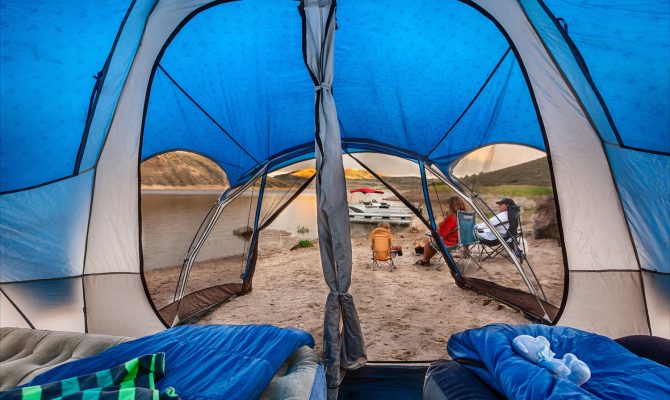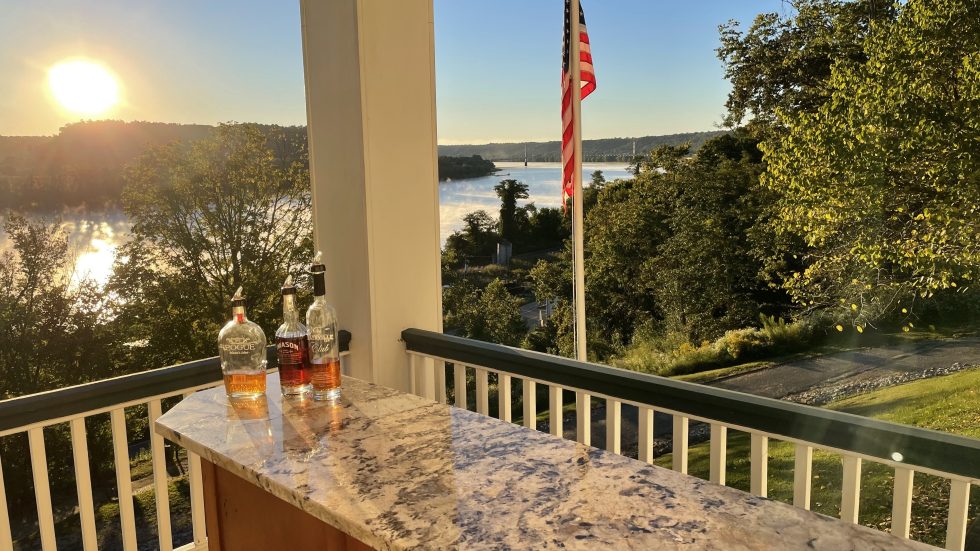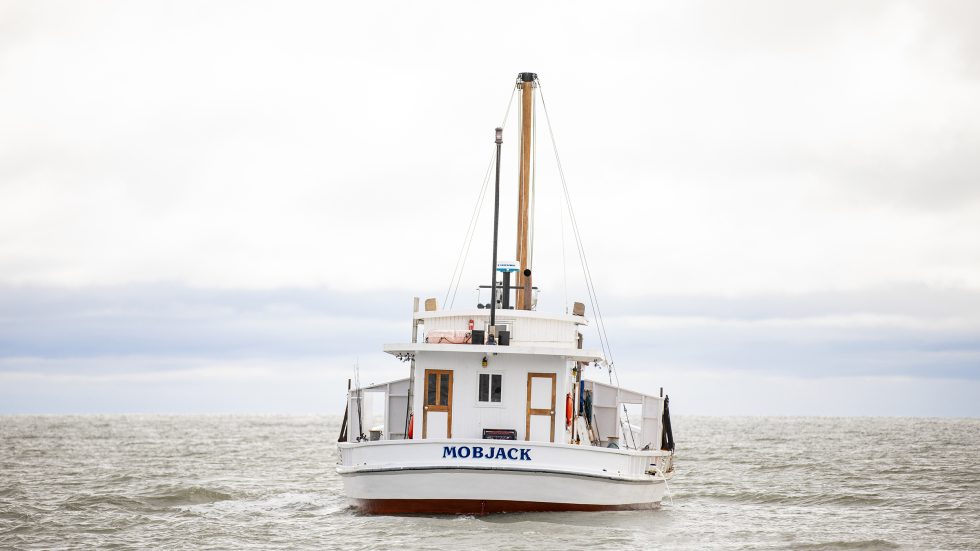The real thrill of boat camping comes with the unfettered backcountry access that your vessel can provide. We discovered this on Colorado’s Blue Mesa reservoir, nestled at 7,519 feet in the Curecanti National Recreation Area. A translucent blue eye in the sagebrush-dotted high mountain desert west of the Continental Divide, this Gunnison River reservoir is the largest body of water entirely within state boundaries. (It’s also the largest lake trout and Kokanee salmon fishery in the country).
Blue Mesa is 20 miles long, has 96 miles of shoreline and plunges to more than 300 feet in places. It offers dispersed camping as well as four designated boat-in camping areas with protected waters for mooring. Just four hours by car from the Denver metro area, we’d found a backcountry boat-camping mecca.
We started our journey at the Elk Creek Marina, located 16 miles west of Gunnison on U.S. Highway 50. We filled our coolers with fresh ice, made sure we had plenty of fuel and picked up a lake map. Cell phone reception on Blue Mesa is sketchy at best, and knowing that even a good GPS can fail, we wanted a trusty paper backup.
Pack for Portability
We also spent time with our gear checklist. While camping with a 21-foot Tracker pontoon boat does give you a fair amount of space and flexibility, it’s not the same as car camping. For one, you need to be self-sufficient; there won’t be a late-night run to the camp store if you need anything. Next, you must be able to ferry everything ashore easily.
We tried to keep things simple. We packed our family tent, sleeping bags, pillows, towels, clothing, camp stove, cookware and utensils, collapsible camp chairs, folding table for meal prep, 5-gallon container of potable water, Sawyer’s 2-liter water treatment system as an emergency backup, propane fire pit (expecting, correctly, that firewood would be scarce), and loaded coolers with carefully planned meals and lots of ice.
We finally fired up the 60-horsepower Mercury four-stroke and left the dock at 2 p.m., which was unwise for this time of year. During the summer North American monsoon season, storms blow up like clockwork during the hot afternoon hours.
But we hoped we’d get lucky. In fact, as we cruised out of Elk Creek, it was almost too hot; we were grateful for the pontoon’s large bimini top and our big, floppy hats. The sun’s intensity at this altitude can be dangerous, making sunscreen, hydration and shade critical.
High Desert Drama
Consulting our lake map, we cruised first to the boat-in campsites tucked into the reservoir’s southern Cebolla Creek Arm. They weren’t quite what we imagined. They didn’t have any big views due to the thick stands of cottonwoods, oaks and junipers, and it was a long, steep walk from the beach. Plus, the tent pads were made for backpacking tents, not two-room family affairs. We decided to keep looking.
Motoring under the Highway 50 bridge into the Sapinero Basin, we caught our first glimpse of the Dillon Pinnacles. Here, wind and water have sculpted 30-million-year-old volcanic lava, rock and mud into spires that rear out of the surrounding high mountain desert.
Keeping the pinnacles to starboard, we turned northward into the West Elk Arm. Somewhere at its head lay a boat-in camping area, and we were determined to find it.
The arm narrowed. We sliced forward at a crawl, scanning the shoreline. I kept a sharp eye on the water, as submerged trees and other snags are ever-present dangers up the twisting arms of reservoir lakes. The last thing we needed was to ding the prop or throw a blade.
Suddenly, we could see the creek spilling down the rocks and quickly threw the pontoon into reverse. It wasn’t worth the risk to go any farther.
We roared back to the main lake with steady 25- to 30-knot winds blasting us on the nose. Once we reached open water, breaking waves greeted us in a barrage of cold spray. Although our most vulnerable gear was safe in dry bags and Pelican cases, we frantically stuffed towels, pillows and duffels into the boat’s available dry stowage spaces, from the cubby within the helm console to the compartments under the seats.
Slice of Heaven
We beat our way across the lake to the fjordlike Lake Fork Arm. We found the boat-in campsites right away; they included a large cleared area that would be perfect for our family-sized tent. They also were full.
Then we remembered dispersed camping. While Blue Mesa does indeed feature four boat-in camping areas with vault toilets, picnic tables, fire pits and tent pads, it also allows camping along the reservoir’s south shore, on Red Creek Island, and along the four main arms.
Back in the West Elk Arm, we found a sheltered sweep of shoreline with a deserted crescent beach. Amid the array of tumbled-down boulders on the sand, we had plenty of room to make camp. Supper was effortless, thanks to our decision to precook bolognese sauce and noodles; afterward, we plied our daughter with roasted marshmallows and sent her to bed.
I woke to the whirr of a spinning reel as my husband made a valiant effort to catch breakfast. Although he landed a couple of small yellow perch, we let them live to fight another day. Instead, we fired up the camp stove for a hearty skillet of scrambled eggs, potatoes and precooked bacon. And then it was time to make the leisurely, hour-long cruise back to Elk Creek.
Twenty-four hours on Blue Mesa, several of them spent in frustration as we sought the perfect campsite. Yet it absolutely was worth it.
Boat Camping Tips
If you’re headed into the backcountry with your boat, there are a few things to remember:
- Bring gear that’s better suited to the national parks than Jellystone.
- Remember your fishing license.
- Practice “Leave No Trace” ethics.
- Leave the dock early so you have plenty of time to find just the right place.
- Savor every moment in the pristine boating haven you’ve discovered — for now, it’s all your own.




